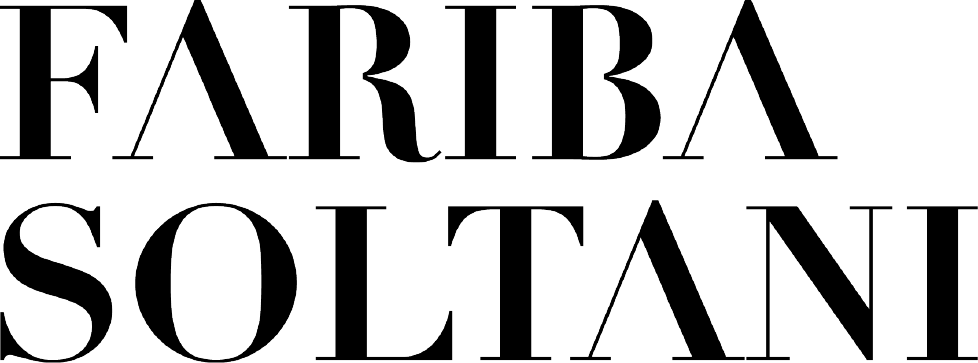
Thrilled to be featured in avant garde magazine SOMA
While the concept of a scarf is hardly novel in the accessories market, nor to fashion for that matter, a scarf that draws its inspiration from interior architecture is more extraordinary.
“My background is in architecture, hence my love for clear lines and subtle choice of colors,” says Fariba Soltani of her uncommon transition from a successful career in architecture to producing original prints and textiles for her collection of scarves. These ensemble-emphasizing accessories offer a pleasing juxtaposition of angular abstraction and symmetry with fluid patterns that represent natural elements like fire and stone for a truly unique product.
Soltani, (whose self-taught mother also possessed a vision for authentic pattern creation and designed handmade Persian rugs,) originates from Isfahan, Iran but eventually made her way to London in pursuit of her education. After attending Kingston University, Soltani worked with renowned architecture firm, Foster & Partners as well as Fox Linton’s design office, where she cultivated a diverse range of design and project experience. Soltani has since successfully freelanced as an interior architect for six years, carrying out luxury residential and trade exhibitions throughout the United Kingdom and beyond. From this experience she developed a strong interest in prints and patterns with prominent abstraction, geometry and story-telling capabilities. This interest soon made its way into Soltani’s work where she began to feature her own original textiles and patterns in her interior designs.
Inevitably, captivated by the idea of transitioning her patterns to wearable textiles, Soltani combined her love of fashion with her graphic interest, and experience in architecture. “For me it is very natural to print my designs on an item that I love to wear,” says Soltani. She quickly discovered silk, cashmere, and modal to be ideal materials for hosting her distinctive motifs, making scarves her natural choice of garment.
Soltani has debuted two striking scarf collections: The Atrisa from autumn/winter of last year and The Salda, her most recent collection for spring/summer of this year. Translating to, “like fire” in Persian, The Atrisa collection was inspired by the metamorphosis that occurs in flames, with its smoke as a momentary canvas suspended in air. Soltani found the
apparitions of flame, when captured by a camera, offered uncluttered, fluid movement that’s inherently bold and exudes modernity and classic style—ideally suited to what she wanted to create with her scarves. The Salda, which translates from Persian to mean, “Mountains,” was inspired by the study of natural stone and reflects the variety of colors of onyx when in its original quarry state. The compositions make a series of abstract, multi-layered geometric proportions in rich, yet muted colors. Each scarf in this collection, rendered in modal blends, is named after a mountain in Iran.
Soltani strives to find an unconventional approach to her design. She finds herself most inspired by cultural heritage, hidden beauty in nature, geometric proportions and the concept of time, speed, and movement. And her methods, though innovative and ultra modern in style, are entirely old-school in their creation. “I use a sketch book heavily for design developments and research. I would only put into production that with which I feel closely connected and that has a strong design quality for myself.” This dedication to create innovative renderings of natural and spatially organized designs make an accessory that needs little help from its supporting ensemble in order to make a bold, chic statement.
Currently, Fariba Soltani’s work is being picked up by boutiques and high-end departments stores such as Fenwick of Bond Street and will soon be launching in Qatar’s luxury store, Blue Salon.
With such an obvious proficiency in generating wearable textiles, perhaps we can expect more garment styles to come from Soltani? “For the foreseeable future it is only scarves,” she says. “But my intention is to grow and expand. Though not something I can say much about right now, I am currently working on some private commissions, developing prints for a very specific market.” If you’re among Soltani’s growing group of admirers, you’ll be waiting with bated breath to discover her future endeavors and it feels safe to assume they won’t disappoint.
Text by Jennifer Moulaison
Photograph by Paul Winstone







